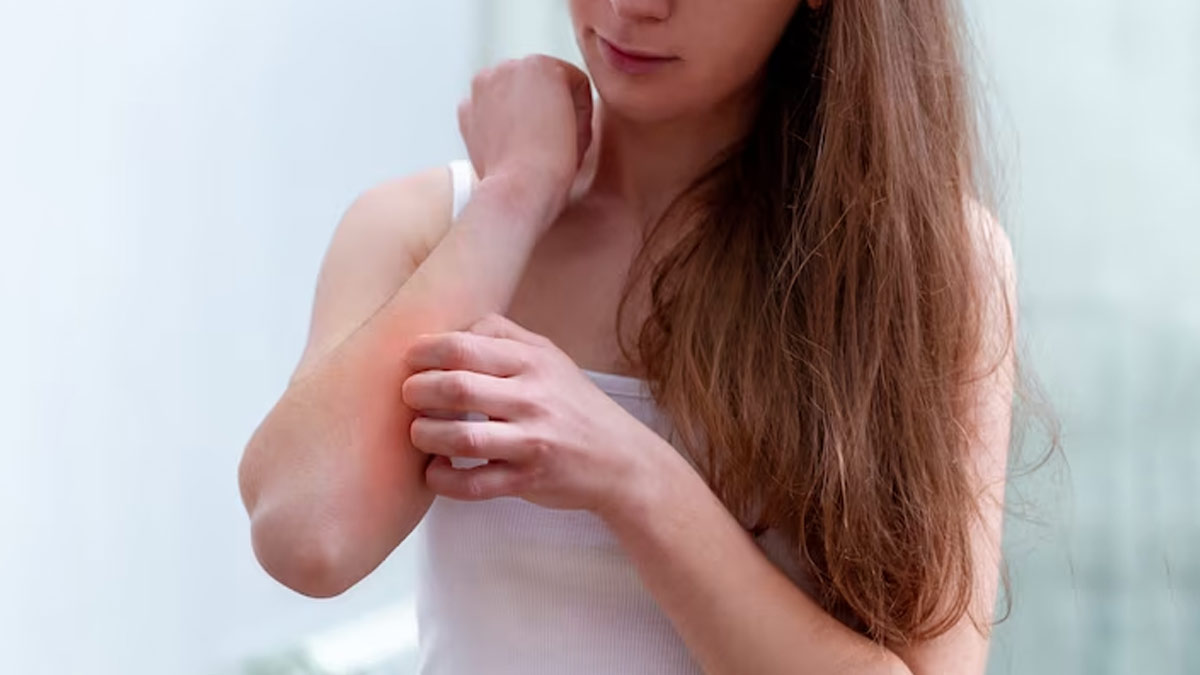
Itching is a common sensation that can be caused by a range of factors, including skin conditions like eczema and psoriasis, allergic reactions to substances or certain foods, and insect bites. Surprisingly, it can also be a result of underlying medical conditions such as liver disease. In an interaction with the OnlyMyHealth team, Dr Ajitabh Srivastava, Director and Senior Consultant-Liver Transplant, Hepato-Pancreato-Biliary Surgery, Aakash Healthcare, New Delhi, explains why.
Table of Content:-
Understanding The Types Of Liver Disease And Its Symptoms

Fatty liver disease, medically known as hepatic steatosis, results from an accumulation of excess fat within the liver, typically when fat constitutes 5-10% of the liver's weight. There are two primary categories of this condition:
Alcohol-induced fatty liver disease (AFLD): This form is triggered by consistent alcohol consumption. A study published in the Journal of Hepatology reports that Alcoholic Liver Disease (ALD) is responsible for 4% of mortality and 5% of Disability-Adjusted Life Years (DALYs), with Europe experiencing the highest impact. The study notes that nearly half a million deaths in 2010 were linked to alcohol-related cirrhosis.
Also Read: Your Legs Can Signal A Fatty Liver Disease: Note THIS Warning Sign
Non-Alcohol Related Fatty Liver Disease (NAFLD): This type of fatty liver disease is unrelated to alcohol intake. Between 2016 and 2019, NAFLD had a global prevalence of 38%, which marked a significant increase from 25.3% during the years 1990-2006. Researchers have not yet pinpointed the precise cause of this condition.
Why Does Liver Disease Cause Itching
According to a study published in the Wiley Online Library, The prevalence of itching has been reported to be 18–77% in patients with primary biliary cholangitis (PBC),5.1–58.4% in patients with hepatitis C virus (HCV) infection, and 8% patients with hepatitis B virus (HBV) infection.
Dr Srivastava says, “Liver disease can result in itching in specific body areas, a condition known as pruritus,” adding that the itching can be quite distressing for individuals and often occurs due to various factors associated with impaired liver function.” Here are some causes to note:

Bile accumulation
According to the doctor, the liver plays an important role in producing and releasing bile, a fluid that aids in digesting and absorbing fats.
“In liver disease, especially cholestatic liver conditions like primary biliary cirrhosis, primary sclerosing cholangitis, and intrahepatic cholestasis of pregnancy, the flow of bile can become obstructed or reduced. This can lead to a buildup of bile salts in the bloodstream, resulting in itching,” he explains, adding, “Bile salts are known to irritate nerve endings in the skin, causing the sensation of itching.”
Metabolic waste accumulation
When the liver doesn't function properly, it may struggle to metabolise and eliminate waste products from the body effectively. These waste products can accumulate in the bloodstream, leading to various side effects, including itching. The exact substances responsible for itching in this context aren't fully understood, but they likely play a role in irritating skin nerve endings.

Histamine release
The liver is involved in regulating various substances in the body, including histamine, a chemical found in some of the body's cells. In some cases of liver disease, there can be an abnormal release of histamine, which causes itching when it binds to histamine receptors in the skin, according to Dr Srivastava.
Also Read: Do Not Ignore Swelling In These 4 Areas; Could Be A Sign Of Fatty Liver Disease
Skin dryness
Dry skin may be a common problem in people suffering from liver disease, which can in turn lead to itching. Dr Srivastava says that liver dysfunction can impact the production of essential proteins and lipids required to maintain skin moisture and integrity.
Inflammation
Chronic liver disease often leads to systemic inflammation, affecting various body parts, including the skin, which is why it can contribute to itching.
Bottomline
Pruritus or itching in liver disease can vary from mild to severe and may not manifest in all cases. Its severity can also differ among individuals with the same liver condition. According to Dr Srivastava, managing pruritus typically involves addressing the underlying liver disease and providing relief from itching. Treatment options may include medications to reduce bile salt levels, antihistamines, moisturisers, and lifestyle adjustments.
Also watch this video
How we keep this article up to date:
We work with experts and keep a close eye on the latest in health and wellness. Whenever there is a new research or helpful information, we update our articles with accurate and useful advice.
Current Version
